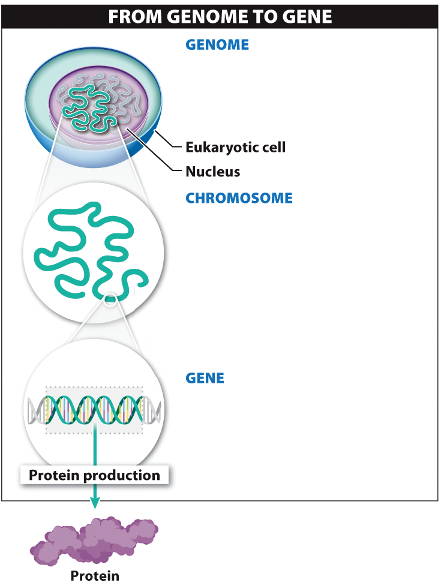 The full set of genetic material present in an organism is called
its genome.
The full set of genetic material present in an organism is called
its genome.
In eukaryotes, DNA in the nucleus is organized in linear strands called chromosomes.
Sequences of nucleotides make up genes
that code for proteins.
Humans have 23 pairs of chromosomes,
one of each pair inherited from our mother, one from our father, for a total of 46.
You may inherit different versions of a gene from your parents.

 DNA and the expression of genes
DNA and the expression of genes 
 DNA and the expression of genes
DNA and the expression of genes 